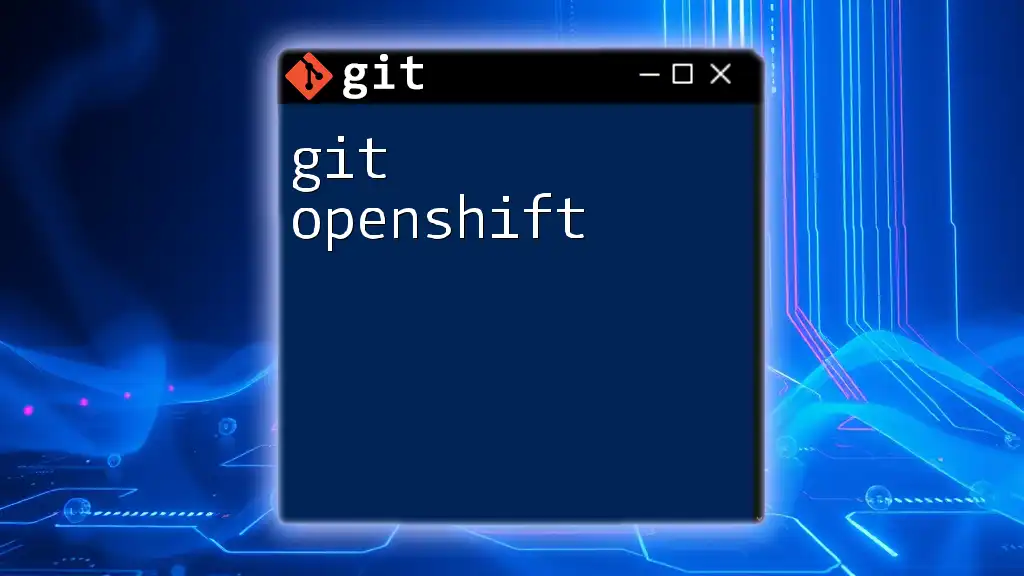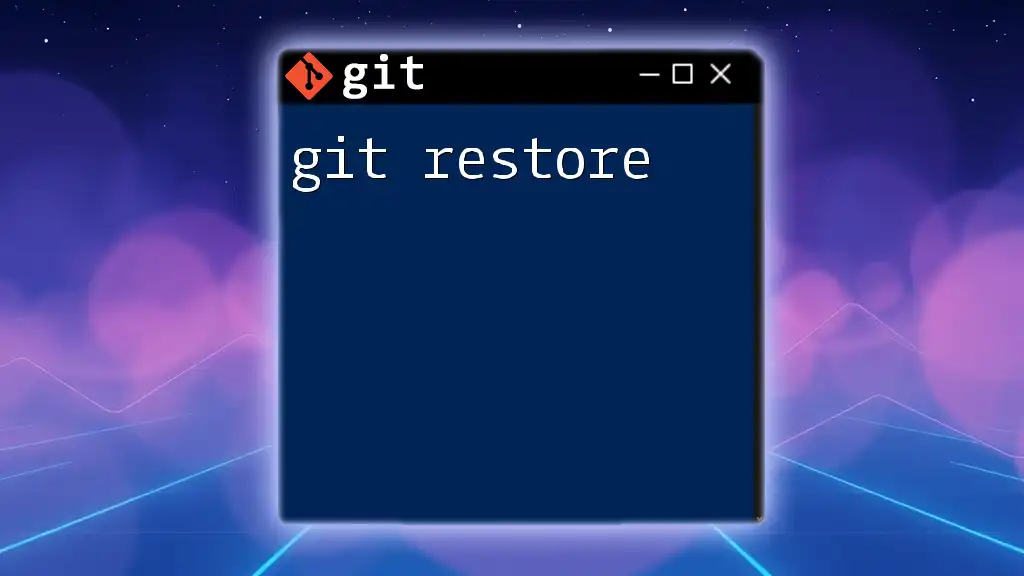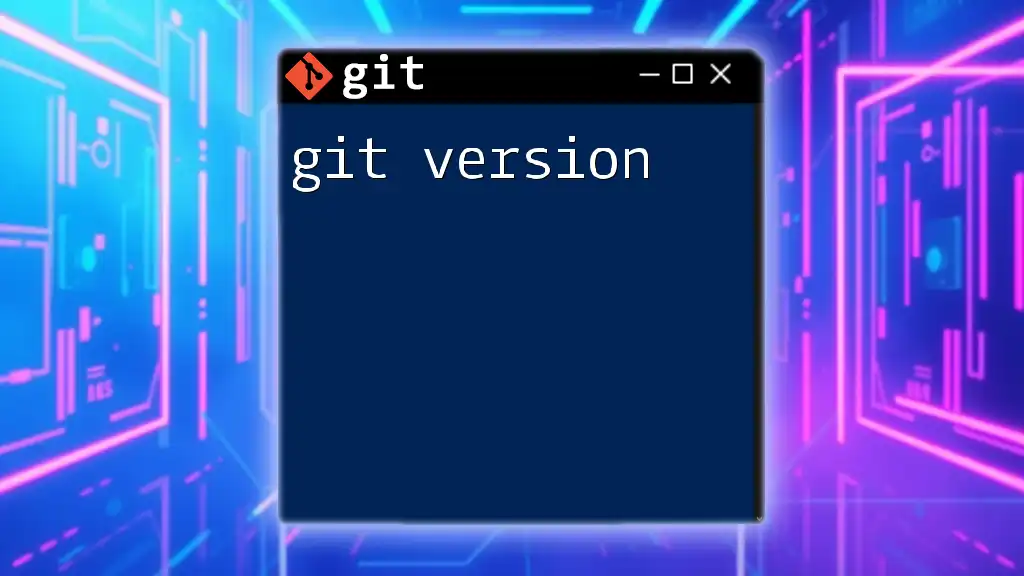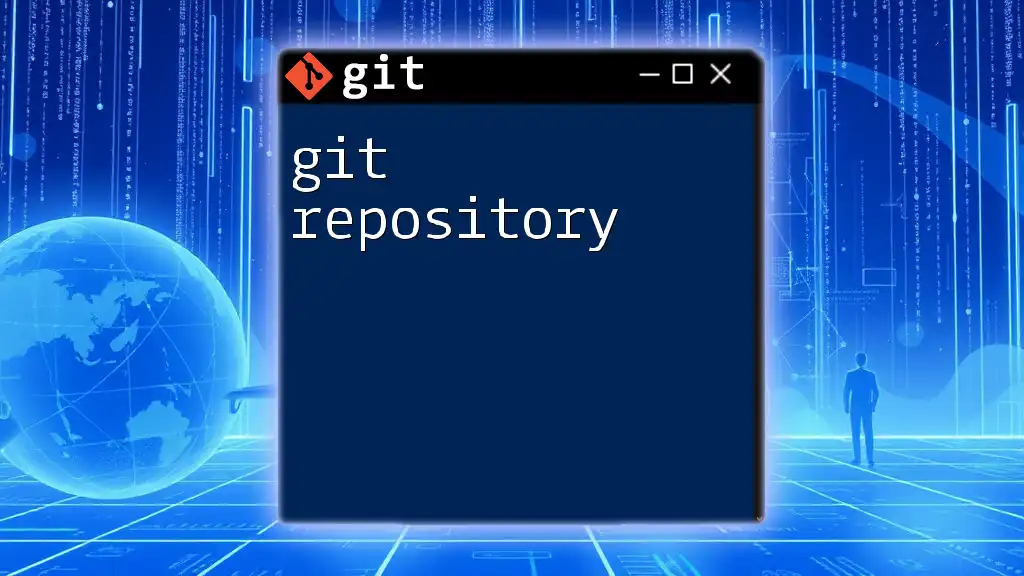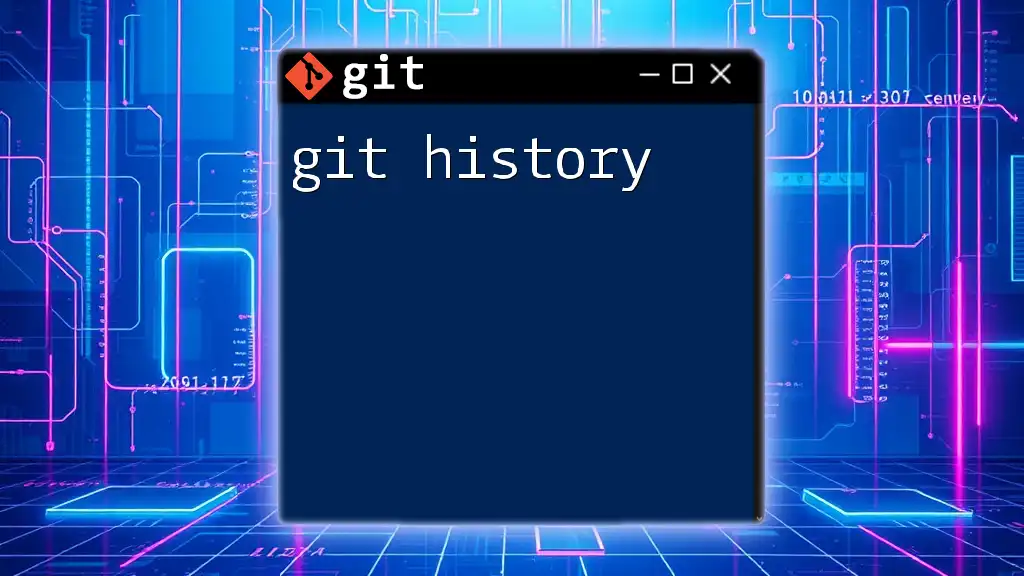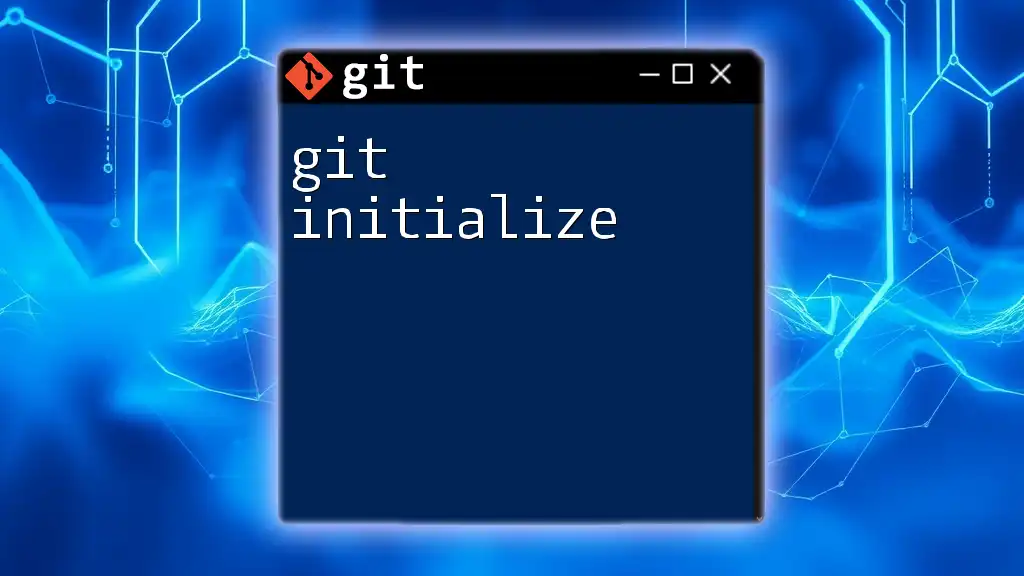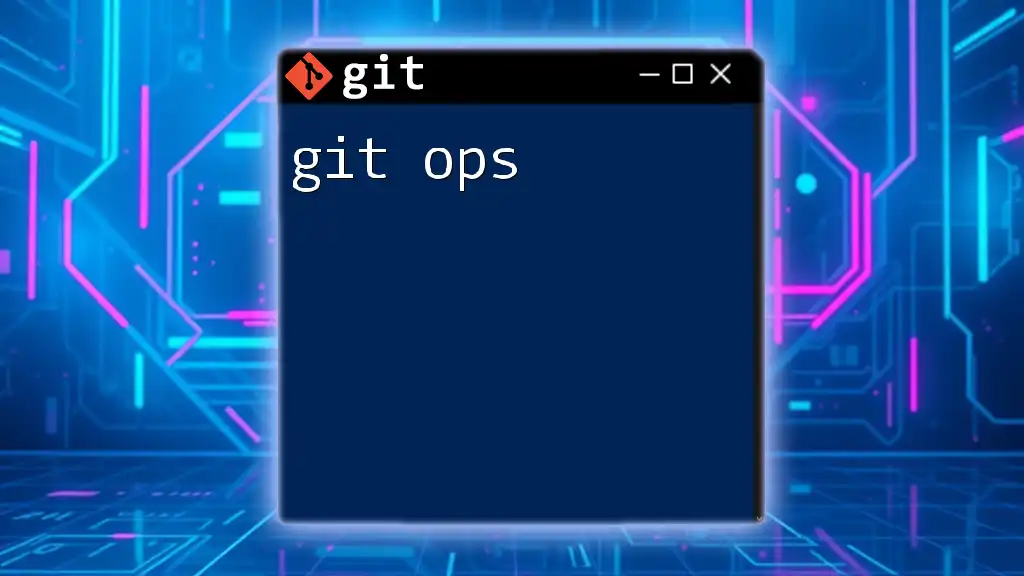Git OpenShift refers to using Git for source code management and deployment in OpenShift, a popular container application platform, enabling developers to easily push their changes to applications hosted on OpenShift.
git push openshift master
Understanding Git and OpenShift Integration
Why Use Git with OpenShift?
Integrating Git with OpenShift streamlines your development process by allowing you to manage your code with version control while effortlessly deploying applications to the cloud. This relationship enhances collaboration within teams, aids in tracking changes, and simplifies the deployment process by reducing manual tasks.
Key Terms to Understand
Before diving into the integration, it's essential to grasp some fundamental concepts:
- Repositories: A repository (or "repo") is a storage space for your project on Git where all code, branches, and history reside.
- Branches: Branches allow you to work on different versions of a project simultaneously. This is ideal for developing new features or bug fixes without affecting the main codebase.
- Deployments: A deployment in OpenShift refers to the process of making an application available for use, whether by creating a new instance or updating an existing one.

Setting Up Your OpenShift Environment
Creating an OpenShift Account
To get started with OpenShift, the first step is to create an account. Visit the [OpenShift website](https://www.openshift.com) and follow the prompts to sign up. The process is straightforward and requires basic information about you and your organization.
Installing the OpenShift CLI (oc)
The OpenShift CLI, commonly referred to as `oc`, is a powerful command-line tool for managing OpenShift projects. To install it, download the appropriate version for your operating system from the OpenShift GitHub releases page. Once installed, verify it using the following command:
oc version
This command will show the version of `oc` installed and confirm that it is ready to use.
Creating a New Project
OpenShift enables you to create dedicated projects for your applications. To create a new project, utilize the following command:
oc new-project my-project
Replace `my-project` with your desired project name. This command initializes a new environment for deploying your app.
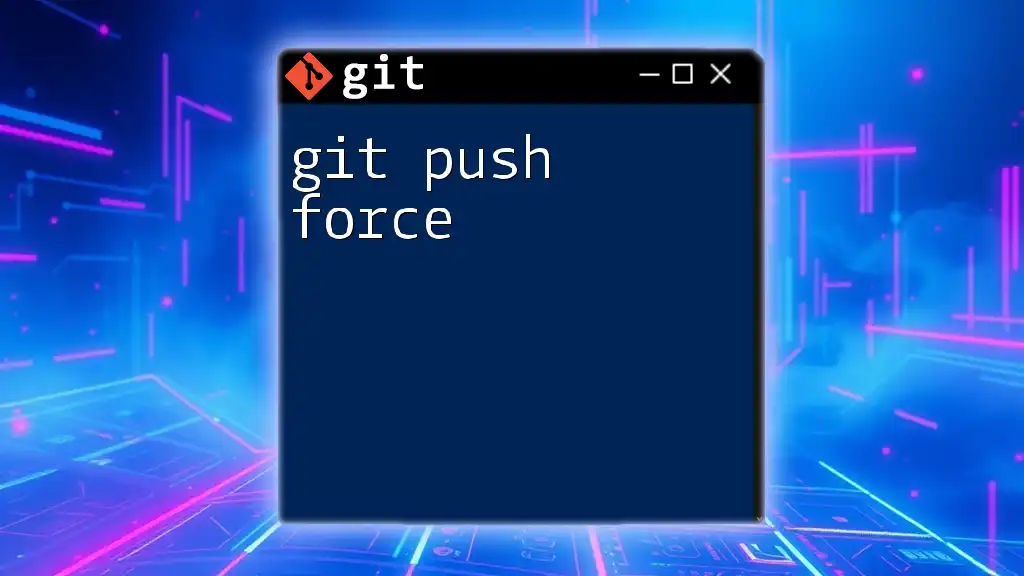
Using Git with OpenShift
Creating a Git Repository
To manage your application’s source code with Git, you need to create a Git repository. Begin by navigating to your project directory and initializing a Git repo with the command:
git init
This command prepares your directory for version control, enabling you to start tracking changes in your code.
Cloning an Existing Repository
If you are collaborating on a project that someone else has already set up, you can clone their repository. Use the following command:
git clone https://github.com/your-username/repo.git
Replace `https://github.com/your-username/repo.git` with the actual URL of the repository. Cloning creates a copy of the codebase on your local machine, allowing you to make changes and contribute to the project.
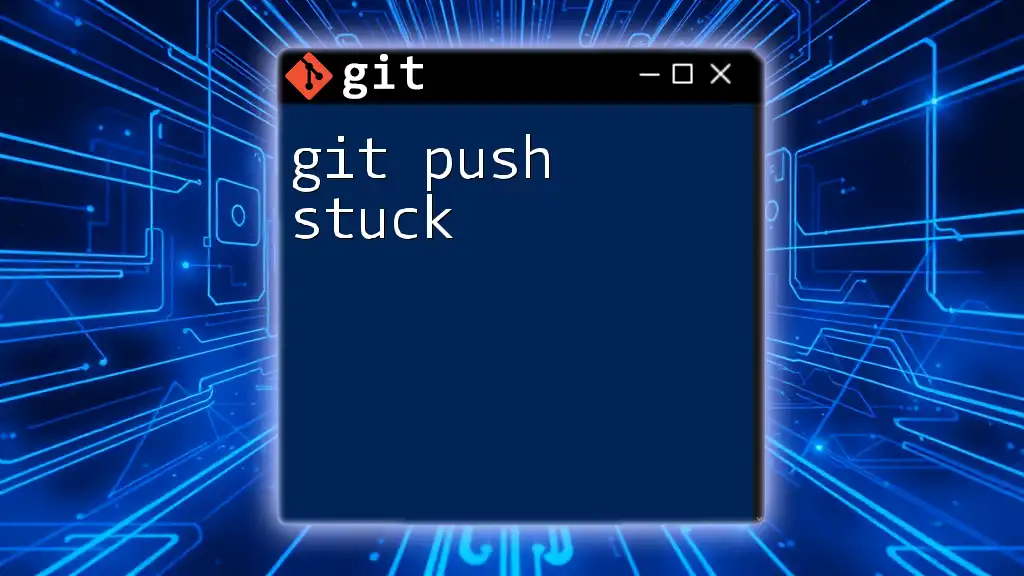
Managing Code in OpenShift
Pushing Code to OpenShift
Once you've made changes to your code within your Git repository, it's crucial to commit and push these changes to OpenShift. Here's a typical workflow:
-
Stage your changes for commit:
git add .This command stages all current changes. You can also specify specific files if needed.
-
Commit the changes with a clear message:
git commit -m "Your commit message" -
Push the changes to the remote repository:
git push origin main
Replace `main` with the appropriate branch name if you are working on a different branch. This sequence ensures that all your local updates are reflected in OpenShift.
Deploying Code from Git to OpenShift
After pushing your code, you need to deploy it to OpenShift. Use the `oc start-build` command to trigger a deployment:
oc start-build <build-config-name>
Replace `<build-config-name>` with your actual build configuration. This action compiles your application and makes it live in the OpenShift environment.
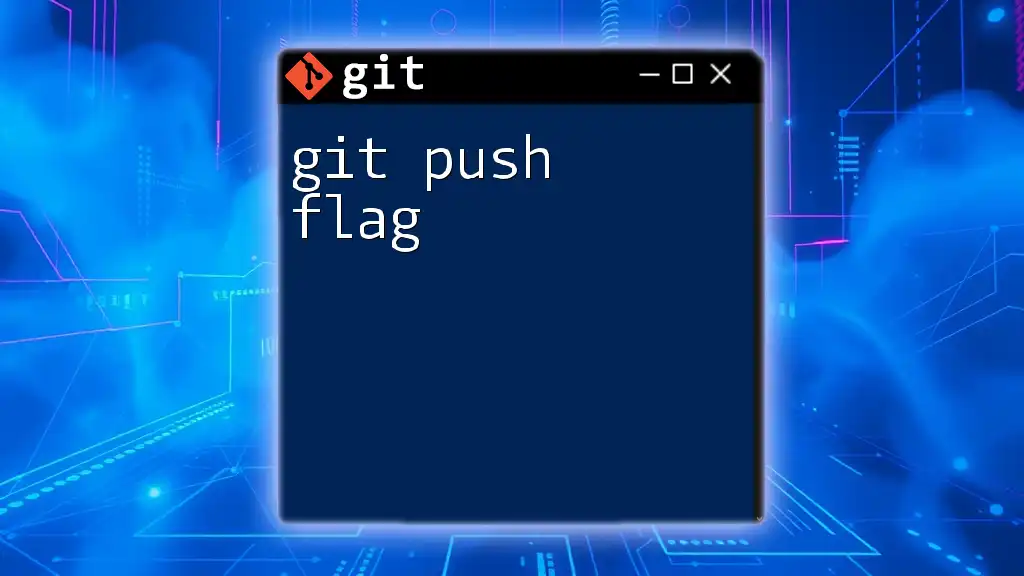
Advanced Git Commands for OpenShift
Branching Strategies
Managing multiple development tasks is simplified with branches. Creating a new branch allows you to work on features isolated from the main codebase. You can create and switch to a new branch with the following command:
git checkout -b feature-branch
By replacing `feature-branch` with an appropriate branch name, you can efficiently manage features or fixes.
Merging and Resolving Conflicts
Once you have completed work on your branch, it may need to be merged back into the main branch. Use the merge command:
git merge feature-branch
Be prepared to resolve any conflicts that arise, particularly if other changes have occurred on the main branch since your branch was created. Git will mark conflicts in the code, and you will need to manually edit the conflicting sections before committing the merged code.

Monitoring and Managing Your OpenShift Application
Using Git to Monitor Application Status
The `git log` command is a powerful tool for reviewing the history of your commits. It allows you to track what changes have been made and by whom:
git log
This command displays a chronological list of your commit history, helping you understand the evolution of your project.
Rollback Procedures using Git
Mistakes happen, and sometimes you need to revert to a previous version of your application. OpenShift allows you to utilize Git's history for rollbacks. Identify the last known good commit and use:
git checkout <commit-hash>
Replace `<commit-hash>` with the actual hash of the desired commit. This action checks out that version of the application, and you can then push it to OpenShift to restore functionality.
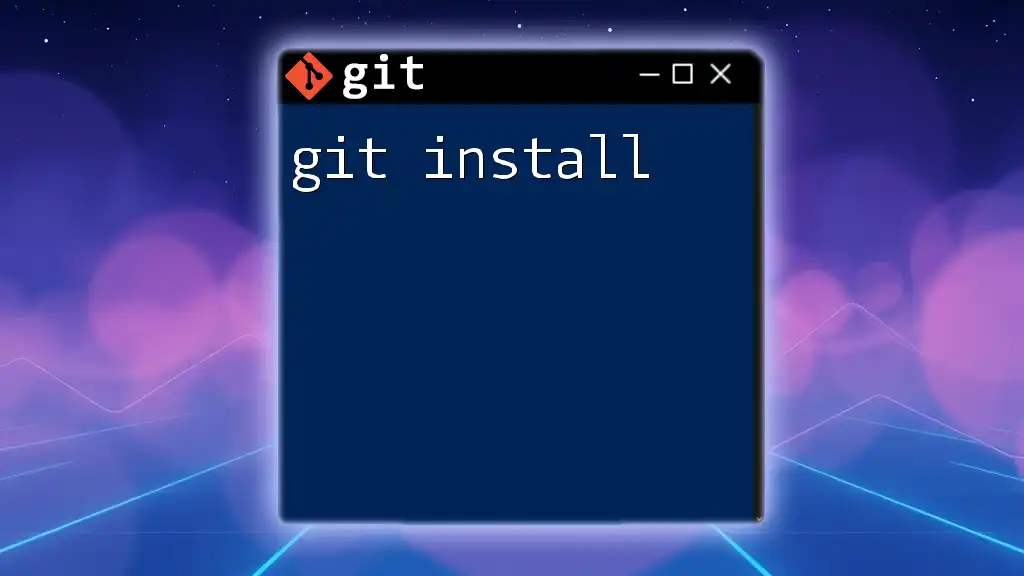
Best Practices for Using Git with OpenShift
Regular Commits and Branch Management
Making frequent commits is crucial to capture the development progress and enable easier rollbacks. Establish a habit of committing when you reach meaningful milestones in your code.
Collaborative Workflow Recommendations
When working with a team, ensure everyone follows a consistent branching strategy and commit process. Regular merge requests or pull requests enhance collaboration and allow for code reviews, promoting higher quality code and reducing the chances for integration errors.

Conclusion
Through this guide, we've explored the seamless integration of Git and OpenShift. By employing these tools effectively, you can greatly enhance your development workflow, improve code management, and facilitate swift deployments. Experimenting with these commands and processes will empower you to harness the full potential of your applications in the OpenShift ecosystem. Happy coding!

Additional Resources
For further exploration, consider checking out the official Git and OpenShift documentation, as well as suggested tutorials for advanced learning. These resources can provide additional context and expand your knowledge as you navigate the world of Git and OpenShift integration.

